2. Samuel George Morton and
His (Paper) Skulls
© 2024 Marianne Sommer, CC BY-NC-ND 4.0 https://doi.org/10.11647/OBP.0396.03
Morton graduated from the University of Pennsylvania with a medical degree, and, after a brief tour of Europe, he returned to Philadelphia, practiced medicine, lectured on anatomy, and wrote on geology, zoology, and paleontology. He wanted to follow Blumenbach and others in the application of the comparative anatomical approach used in these fields to the study of humans. In fact, one of the pioneers of craniometry, the Dutch Jacob Elisa Doornik, persistently tried to persuade Morton to publish his own ‘Decas craniorum’, i.e., to describe a skull collection of his own. It was also Doornik who advised Morton not to restrict himself fully to the skulls of ‘American tribes’, “because you deprive your self [sic] exactly of that what you want above all – points of comparison […]”.1 Morton should widen the comparative scope to other ‘nations’. However, when working on the different skull forms in the ‘five human races’ for a lecture held in 1830, Morton had realized that he needed more ‘specimens’. Doornik was only one among many who assisted him in remedying the situation. He gave Morton half of his varied skull collection with the drawings for free, offering the other half for sale.2 On his death in 1851, Morton left behind 867 cleaned and polished skulls from all over the world; nonetheless, remains of Indigenous peoples of the Americas were particularly prominent.
The fact that Morton was of ill health increased the importance of a network of helpers for the so-called American father of physical anthropology. As Ann Fabian (2003; 2010, 9–46) has detailed, it was therefore opportune that Morton was the Corresponding Secretary of the Academy of Natural Sciences in Philadelphia, which meant he oversaw the circulation of information and specimens. He managed to enlist many such helpers for his skull ‘collecting’, including army men and doctors, missionaries, officials, settlers, explorers, phrenologists, and naturalists. Morton’s project was enmeshed with imperialism and colonialism globally and, in particular, with the American frontier violence of the 1830s and 1840s, when eastern nations were forced off their ancestral lands. ‘Collectors’ would detail their methods of skull acquisition in letters, which, more often than not, involved grave robbing. While there might be rivalries between looters, and while remains might be protected by Native Americans, war and disease were on Morton’s side.3
The skulls from all over the American continent allowed Morton to approach the question of the identity of the Indigenous peoples of the Americas in his Crania americana of 1839. However, Morton’s collection was much more encompassing. His gruesome booty encompassed, for example, the heads of ‘uncultivated’ Anglo-Saxons, “lunatics” and “idiots” (Morton 1849a, n.p.), or more generally of marginalized people such as a Parisian prostitute. He held remains from hospitals and institutions for the poor, of a (most likely Aboriginal) Australian executed for cannibalism, as well as Afghans, Greeks, Black Africans, African Americans, and Chinese. For his second skull atlas – Crania aegyptiaca of 1844 – the (former) US consul of Cairo, Gliddon, supplied him with over one hundred Egyptian skulls in a large-scale plundering project. Morton had to imburse Gliddon for packing, shipping, and other transportation, as well as for services such as grave raiding, bribery in hospitals, and so on, testing Morton’s dedication to the project. After all, Morton had limited funds and carried out his ethnology as a pastime. Despite the unethical and uncanny nature of skull ‘collecting’ and ‘collections’, Morton made no secret of the origins of his loot in his books and catalogues, and this transparency was maintained by those who followed his lead. Where possible, Morton catalogued the skulls with information on ‘race’, sex, place of birth, and identity of ‘collector’. Where available, stories were given about the persons to whom the remains had belonged and how they had died (Morton 1839, 1844, 1849a).4 The histories of the human remains were important for the ‘science of craniology’; consequently, the skull collections required paper archives, documenting these details (Roque 2010, 118–22).
Morton made his skull series – dubbed the ‘American Golgotha’ by a ‘collector’ – available to visitors. He also exchanged skulls with other ‘collectors’. Most importantly, however, he circulated his skulls as images and text on paper, so that the series could easily reach the great anthropologists in Europe too. In 1839, Morton did so through his publication Crania americana; or, A Comparative View of the Skulls of Various Aboriginal Nations of North and South America, to Which Is Prefixed an Essay on the Varieties of the Human Species. This was not entirely novel; a few years earlier, he had published a groundbreaking work in paleontology dedicated to his colleague and correspondent, the renowned British geologist and paleontologist Gideon Mantell. It was similarly structured, serving as a kind of atlas with a systematic treatment of reptiles, fish, and mollusks of the US Cretaceous, followed by a section containing beautiful plates of specimens (Morton 1834).5
Crania americana was nonetheless a novelty in that it introduced a diagrammatic and metric approach to human diversity through a skull atlas. At the same time, this genre, too, had its historical inspirations. Indeed, we may look back as far as the early decades of the seventeenth century, when Adriaan van den Spiegel’s De humani corporis fabrica libri decem was posthumously published. In his instruction on human anatomy, the Flemish specialist, who might indeed have been the first to carry out craniological measurements, examined the size, shape, and proportions of the head that could be long/short, broad/narrow, high/low, pointed/rounded (Spiegel 1632, 21–22; Marinus 1846). At the end of van den Spiegel’s long treatise, there was added a set of woodcuts, including some of skulls in which letters had been inserted to instruct in the anatomy of the parts and their relations to each other (see Figure I.4). As we will see, the transformation of skulls into immutable mobiles (on this term, see Introduction), this diagrammatic way of inspecting the images, and of relating text and image to each other were brought to an apex in Morton’s skull atlases.

Fig. I.4 Table of skulls. Adriaan van den Spiegel, De humani corporis fabrica libri decem (Frankfurt: Impensis & caelo Matthaei Meriani bibliopolae & chalcographi, 1632), Vol. II, Plate 3, appendix. Public domain.
Morton most deeply embedded his work in the tradition of Camper, Blumenbach, and Prichard – the latter representing an approach he partly opposed, the first two representing an approach to which he aspired. Morton’s Crania americana was more opulent and more extensive than the preceding Decas by Blumenbach. Morton had hired the Philadelphia lithographer, John Collins, to draw his skulls onto stone for the substantial appendix of plates. Somewhat surprisingly, the image Morton chose as the frontispiece of Crania americana first seems to suggest a traditional ethnological treatise. It is a drawing of a representative of ‘another race’, such as found in the third edition of Prichard’s Researches (1836–47; on these images of Prichard, see Augstein 1996, 326–35). It shows a Native American chief who was painted from life by a Philadelphia artist and lithographed by another artist of that city. But its traditional look is misleading. This is not simply a portrait. It is a diagram, or at least Morton wanted the reader to look at the image in that way. As is typical for Morton’s play of cross-references between bones and paper, and image and text, he referred the reader to page 292, where he proclaimed the warrior and orator of the Omaha as most characteristic of the Indigenous peoples of the Americas, “as seen in
the retreating forehead, the low brow, [...] the large, aquiline nose, the high cheek bones, full mouth and chin, and angular face” (1839, 292).
Before entering the main text, the reader is then presented with the map of the world, reproduced in Figure I.5, “shewing the geographical distribution of the human species” (on map). Morton wrote that the distribution of the ‘five races’ “in the primitive epochs of the world” (1839, 95) was represented after Blumenbach. However, this map anticipated Morton’s main findings that strongly diverged from Blumenbach’s views. Morton would not argue but ‘demonstrate’ that the ‘American tribes’ constituted their own ‘race’, with the exception of the ones northern of the 60 degrees latitude, whom Morton considered to have migrated from Asia and to be now a mixture of ‘Mongolians’ and ‘Americans’. But on the map, this intermixture had not yet taken place: the ‘great races’ were still neatly separated from each other in what Morton largely took to be their original territories. It was only in the course of time, he imagined, that this perfect order would have been disturbed through major migrations and interbreeding. Rather than a relating diagram, this is therefore one that denies a kind of relatedness which, at that time, was still taken more or less for granted: it denied the notion of ‘the family of man’ in the sense of a humankind that had descended in its entirety from a single pair or stock at a common place of origin, from where, eventually, the earth was populated with humans.
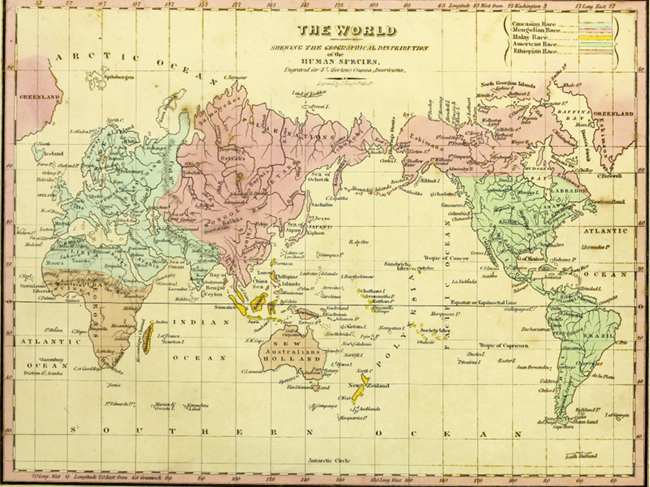
Fig. I.5 “The World – shewing the geographical distribution of the human species”. Samuel George Morton, Crania americana […] (Philadelphia, PN: J. Dobson, 1839), engraving, after p. v. Public domain.
Morton (1839, 1–95) prefaced Crania americana with a ninety-five-page ‘essay’ on the human ‘races’ and the twenty-two families he thought they comprised. He provided a list of them with a short general morphological and temperamental description that was followed by longer treatments of each group. Morton estimated that the most intelligent and advanced families belonged to the “Caucasian Race” (5). Typical of his style, his description of the ‘Caucasians’ reads like a diagram in words with the face, for example, being “small in proportion to the head” and of “well-proportioned features” (ibid.). This already makes clear that while parts of the same skull were set in relation to each other, the judgments (“small”, “well-proportioned”) depended on the comparison of these proportions to those found in other skulls and ‘races’. Morton stated that the ‘Caucasians’ originated in the area between the Black Sea and the Caspian Sea, from where they migrated and developed into what he considered to be ‘the best types’. However, he thought that only the ‘more advanced races’ in the moderate climates were prone to migrate; generally, everyone “thinks no part of the world so desirable and delightful as his own” (1). Drawing on Blumenbach and reminiscent of Camper’s esthetics, Morton described the ‘Caucasian’ profile as approaching that of the Greek: some ‘Caucasians’ were as beautiful as classical sculptures. Dissociating himself from Prichard, who had called the ‘Caucasian’ families ‘Indo-European nations’, Morton was of the opinion that real affinity was best determined through anatomical study. ‘Indo-European’ may describe their languages, but anatomy determined the peoples. Morton continued in this vein, with the “Ethiopian Race” (6) – that contained the Black African family and the ‘Australian families’ among others – taking the lowest rung. Particularly the Khoekhoe or the Khoisan as a whole were described as “the nearest approximation to the lower animals” (90).
However, in Crania americana, Morton was most interested in the “American Race” (6), especially in the ancient Peruvians (1839, 96–112). This extinct type was older than the Incas and was only known from remains taken from graves. From the remains that had been robbed from tombs, Morton concluded that, though the ancient Peruvians had lowly features, they had already been civilized. Morton’s physical descriptions of the ‘American nations’ followed the order of the paper skull collection at the end of the book, so that the reader might see the specific characteristics and proportions for himself while contemplating the measurements provided in tables. Plate 4 of the appendix, my Figure I.6, for example, was in the explanatory text described as the type specimen for the ancient Peruvians.
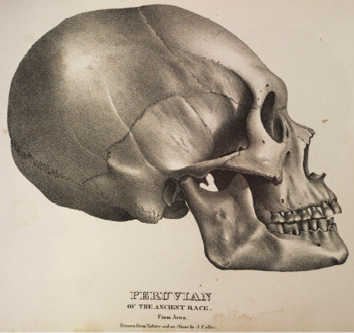
Fig. I.6 “Peruvian of the ancient race”. Samuel George Morton, Crania americana […] (Philadelphia, PN: J. Dobson, 1839), Plate 4, lithograph, appendix.
Public domain.
In addition, Morton included many outlines of skulls throughout his discussion of the ‘American race’, and Figure I.7 of ‘Mexican skulls’ shows that he called these skull drawings ‘diagrams’. Figure I.7 makes clear that even if the drawings did not contain lines or numbers, they were set in relation with numbers and looked at with eyes trained in lines, volumes, and the facial angle. The production of these woodcuts had been a challenge. Morton had turned to artists who worked with the camera lucida and the graphic mirror, in vain. In the end, he drew the images himself by means of an instrument adapted for the purpose by John S. Phillips of the American Academy of Sciences. This craniograph, the workings of which were explained in Crania americana by means of a diagram, allowed the user to draw the skulls on glass in reduced size while maintaining their proportions. The outlines could then be transferred to paper and wood (Morton 1839, 294).
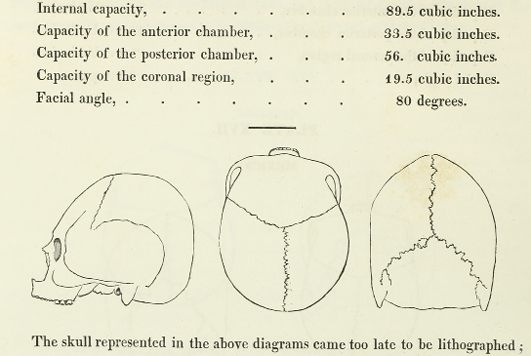
Fig. I.7 Skull woodcuts as diagrams. Samuel George Morton, Crania americana […] (Philadelphia, PN: J. Dobson, 1839), p. 154. Public domain.
The reader was instructed in this kind of diagrammatic analysis to construct self and other in the section on anatomical measurements (Morton 1839, 249–61). Linear measurements could be obtained with craniometer and calipers, but the facial angle after Camper, which elucidated the projection of the face in relation to the head, was of particular importance. Blumenbach’s norma verticalis, too, was discussed on the basis of the diagram of the three skulls and the line of their orientation (see Figure I.3). In order to render Camper’s measure more scientific and accurate, Morton, unlike Camper himself, determined the facial angle directly from the skulls with the original type of facial goniometer (an instrument devised by his friend Dr. Turnpenny). As in the case of the craniograph, this instrument was explained by means of a diagram, as Morton called it (252–53), and it was accompanied by other diagrams (see Figures I.8a–b) showing the lines that gave the facial angle drawn on skulls. E gave a facial angle of 66° for the first diagram of a head from the Cowlitz Indian Tribe. In the second, “much better formed head” of a “Peruvian Indian”, it amounted to 76° (250), which, however, still compared poorly with a ‘Caucasian’.
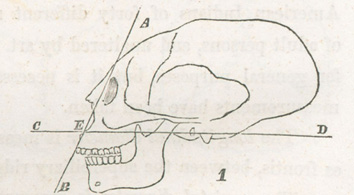
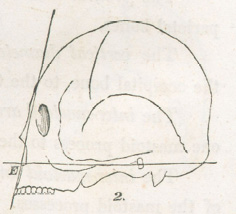
Fig. I.8a and I.8b Camper’s facial angle. Samuel George Morton, Crania americana […] (Philadelphia, PN: J. Dobson, 1839), p. 250. Public domain.
Nonetheless, the facial angle was no indication of cranial capacity and thus intelligence in Morton’s view (something Camper had never claimed). To determine brain size and intelligence through the measurement of the internal skull capacity, as well as of particular portions of the skull, in cubic inches with white pepper seed, Morton had Phillips design yet another instrument. Morton again included an instructing diagram of that instrument in the book and accompanied it with textual explanations (1839, 253–54). Finally, he provided a table summarizing all the measurements for the ‘American’ skulls that ran over three pages (257–59). For each skull, the ethnic origin, catalogue and plate number, if present, were given, followed by the measurements. There was no particular order here, and since Morton changed measurements in the table while the book was in print, the table did not always correspond to the text above. It was only by providing the means of the different measurements for the four major divisions he made within the Indigenous peoples of the Americas in another table that the numbers began to gain meaning, but, at the same time, this showed that ‘the barbarous nations’ had bigger cranial capacities than ‘the semi-civilized ones’ (Toltecs and ancient Peruvians). Morton could only achieve ‘real order’ when, after having gone to this length of individually measuring the ‘American’ skulls, he unified them, namely as a mean in brain size, reintegrating them into Blumenbach’s five-part system. Blumenbach’s system was thereby transformed into a ‘racial hierarchy’, based on numbers in a table (Figure I.9).
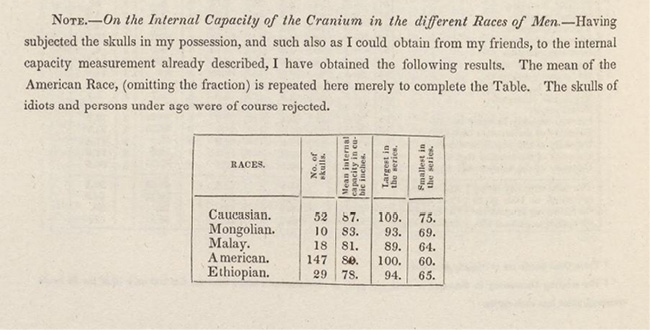
Fig. I.9 Morton’s diagrammatic ‘racial hierarchy’. Samuel George Morton, Crania americana […] (Philadelphia, PN: J. Dobson, 1839), p. 260. Public domain.
However, there was an alternative scientific approach present in the book that was as objectifying and judgmental as the ethnological perspective. This was the phrenological system. Morton had studied for an advanced medical degree in Edinburgh (graduating in 1823), then the British center for phrenology, housing the Edinburgh Phrenological Society and its collection of skulls. There, Morton had made the acquaintance of the phrenologists Johann Spurzheim and George Combe. In Crania americana, Morton now included a note by Phillips, in which Phillips explained how he had made phrenological measurements of the same skulls with the use of a craniograph, calipers, dividers, a graduated strap and a measuring frame (Phillips in Morton 1839, 262). These measurements related to mental attributes such as self-esteem, firmness, hope, and benevolence, and the results were listed in a table that ran over six pages (263–68). Morton emphasized that he had not carried out the entire work from the phrenological perspective; he called himself a learner and preferred to let the reader judge the two approaches. Nonetheless, he agreed with the phrenological assumption that the brain was the organ of the mind and that different parts performed different functions. Also, the interpretations from phrenology corresponded with his ideas about the “mental character of the Indian” (Morton 1839, n.p.).
These interpretations were those of the famous phrenologist Combe himself, who was on an American tour when he collaborated with Morton, shortly before the appearance of Crania americana.6 Combe, too, was given a voice in the book at the beginning of the appendix (Combe in Morton 1839, 269–91). He had to make his judgments on the ‘races’ before reading Morton’s, so he “solicit[ed] the reader [...] not to condemn phrenology” alone, should the conclusions from ethnology differ from “the phrenological inductions the reader will be enabled to draw by applying the rules now to be laid down” (270). Combe concluded that the ‘Caucasians’ were the most prone to advance, and within them the “Teutonic race” (271), much more so than the Celtic in France, Scotland, and Ireland. Asians were seen as less likely to reach a high grade of civilization, and Black Africans were not considered predisposed to even make history. Even so, some “African tribes” (ibid.) were more advanced than those “tribes of native Americans” that were still “wandering savages” (272). Combe judged that the “American race” (ibid.) had been and remained barbaric, with no inclination to learn from the Europeans who surrounded them. These ‘national differences’ were not due to climate, Combe claimed, since ‘races’ under similar climates differed, nor due to institutions; rather, people developed institutions according to their inclinations and purposes. For Combe, it was the form (size and proportions) of the brain that corresponded to dispositions and talents of individuals and peoples.
Plate 71 in Crania americana, Figure I.10 below, shows a Swiss skull. Combe had included visual aids in the image in the form of lines, so that the reader may be able to observe the extraordinary mental vigor of the Swiss. He led the reader step by step through the diverse measurements with reference to the Swiss skull, adding further diagrams where necessary (Combe in Morton 1839, 280–81). This diagrammatic skull could then “serve as a standard by which to compare the skulls of the other tribes represented in this work”: “by comparing the dimensions of this Swiss skull as they appear to the eye in the plate, with those of the other skulls delineated in this work, all being drawn as large as nature, their relative proportions will become apparent” (277–78). Indeed, Combe had already announced to Morton in a letter prior to his work on the skulls that he “would teach the reader of how to judge of them [the ‘races’] by the skulls.” To that purpose, he wanted his “lines inserted in these drawings” (Combe to Morton, 19 March 1839, Samuel George Morton Papers, American Philosophical Society Library, Mss.B.M843: Series I. Correspondence [hereafter Morton Papers APS]).
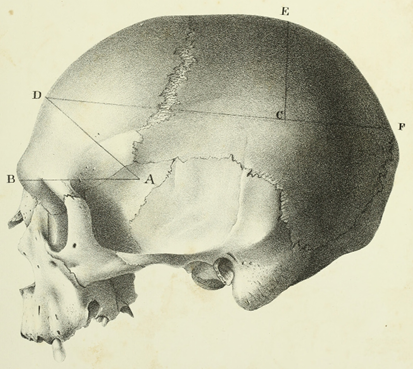
Fig. I.10 “Swiss”. Samuel George Morton, Crania americana […] (Philadelphia, PN: J. Dobson, 1839), Plate 71, lithograph, appendix. Public domain.
However, Figure I.10 remained the only lithographed skull to which lines have been added. It is the same kind of image as those of Morton in the appendix (see Figure I.6), only that a diagrammatic approach was indicated in the plate itself for didactic purposes. The reader was thus once again instructed in how to read, as diagrams, the realistic lithographs of skulls in the appendix that did not contain any diagrammatic elements. Nonetheless, even if the phrenologist worked with cranial capacity and facial angle, phrenological readings and measurements were different from ethnological ones. This becomes evident from the phrenological chart following the Swiss skull at the end of Crania americana (see Figure I.11). Such phrenological busts, as well as skulls, often with the ‘organs’ inscribed and numbered, or marked by lines, frequently accompanied phrenological writings, as did diagrams of calipers and craniometers. However, portraits were a more prominent form of illustration, and phrenologists were more concerned with how well-known personalities exemplified certain physical traits and associated faculties, and with the physiognomy and phrenology of the sexes or types such as ‘criminals’ or the ‘mentally ill’, than with the differences between ‘nations’ or ‘races’ (e.g., Combe 1822, 1826, 1830; Mackenzie 1820). Even where Spurzheim had published on the differences in faces between ‘races’ in Phrenology in Connection with the Study of Physiognomy of 1833, he left the portraits of ‘a Malay’, ‘a Mongol’, ‘a Jew’, and Hannibal without commentary, and illustrated the dispositions of ‘European types’ on the basis of what he took to be representative personalities (23–29).
At the same time, Spurzheim (1833, 43–46, Plate XIII) did state that heredity was much more important than environment, that physical traits and the characters they stood for were endurable (if the ‘nations’ did not mingle), and he did present the skulls of an Indigenous person of Brazil, a Native American woman, a Hindoo, and Blumenbach’s ancient Greek and described them in terms similar to the ethnology of Morton. There is one further characteristic besides the theoretical emphasis on physical aspects and the head that render phrenological treatises likely inspirations for Morton’s crania atlases, and that is the diagrammatic and metric nature of the approach and the visualizations. The phrenological treatises were written as instructions to readers on how to practice ‘the science’ themselves. Thus, George Mackenzie’s Illustrations of Phrenology (1820) already contained plates with naturalistic skulls with the phrenological grid inscribed, alongside illustrations of skulls that had not been turned into diagrams but were nonetheless intended to be read as diagrams by the viewer.
In Crania americana, both Morton and Combe now went to greater lengths and proceeded much more systematically. The phrenological chart included in the volume should be used by the reader in combination with Combe’s corresponding textual explanations to perform a phrenological reading of the ‘racial’ skulls himself, “to judge of the size of the different parts of the brain in relation to each other” (Combe in Morton 1839, 278). The different regions of the skull were correlated to mental characteristics, measures of which for the skulls in general were given in the six-page-long table after Phillips’ note mentioned above. In following Combe’s phrenological interpretations of the realistic skull lithographs, the reader should verify that the skull shapes of ‘nations’ foretold whether they had been or would be subjugated or even exterminated by another, or rather live in civilized freedom (278–83). Colonial histories with all their violence and exploitation were thereby naturalized.

Fig. I.11 “Phrenological Chart”. Samuel George Morton, Crania americana […] (Philadelphia, PN: J. Dobson, 1839), Plate 72, appendix. Public domain.
In sum, Crania americana was a book that instructed in a new scientific approach, not in the method of comparative philology, history, and culture, but in reading osseous remains to allow the establishment of human ‘races’ – perceived as (originally) distinct and nearly unchanging entities. This approach was not only diagrammatic, like Blumenbach’s, but decidedly metric. While Camper and Blumenbach had used the dynamics of diagrams to show the possibility of the human varieties’ development from one original type, Morton, to the contrary, established diagrammatic and metric techniques that effectively froze their anatomies into a hierarchical arrangement. Seemingly no longer part of the same ‘genealogical family’, they remained juxtaposed to each other like numbers in a table. Morton therefore instructed in the diagrammatic reading of images and made use of the ability of diagrams to set (aspects of) objects in rational relation to each other (see my discussion of Peirce at the beginning of this part) – not in order to demonstrate kinship, but to deny it.
However, Crania americana also represents a point at which it was not yet clear whether this new approach would be the one of ethnology or phrenology. This, as Morton and Combe put it, would be decided by the readers and by time. Indeed, scholars allowed themselves to be instructed – some preferred ethnology, some phrenology, and others the combination – and they used Morton’s movable images to spread the word and argue for the cause of their chosen camp. Morton himself donated Crania americana to European institutions to promote his new science of ethnology. He sent important scholars, such as Alexander von Humboldt, a presentation copy. But, by the late 1830s, these institutions had come into financial difficulties, and the book did not sell well despite Combe’s efforts to launch it in the US and Europe (Fabian 2003). At the same time, Crania americana was received by institutions from the Asiatic Society of Bengal, the Société Ethnologique in Paris, to the Royal Society of Northern Antiquaries in Copenhagen, which indicates that the volume was understood to contribute to different branches of knowledge (Poskett 2015; 2019, 78–114; Sommer 2023a, 11–21).
1 Doornik to Morton, 23 June 1835, Samuel George Morton Papers, American Philosophical Society Library, Mss.B.M843: Series I. Correspondence (hereafter Morton Papers APS). Doornik had moved to the United States and between 1828 and 1835 acquired enough of the English language to write to Morton in English rather than French.
2 Ibid., see also Doornik to Morton, 3 July 1835, 11 July 1835, 21 July 1835, Morton Papers APS, in which Doornik provided some information on the history of the skulls. The letters further document how they bickered over the payment and the price of the second half of his collection and drawings.
3 Morton’s correspondence documents this ‘collecting mafia’ as well as his acquaintance with influential scientists internationally, like William Buckland, Gideon Mantell, Charles Lyell, Alexandre Brongniart, or Edward Hitchcock (Morton Papers APS). It also documents how his interest in mineralogy, geology, and paleontology, as well as in ornithology and zoology more broadly, gave way to a focus on anthropology around the mid-1830s. Rather than shells, minerals, animal specimens, etc., it was now more often skulls that were discussed and transferred in bone or on paper.
4 For more on the ‘collecting’, see correspondence (with Gliddon), Morton Papers APS; Fabian 2003; Michael 2023.
5 That this kind of lavish illustration was part of a particular genre becomes evident when looking at other works, such as Morton’s first American edition of John Mackintosh’s authoritative Principles of Pathology and Practice of Physic, which contained no images (Mackintosh and Morton 1836).
6 The American edition of Combe’s Elements in Phrenology (1826) had sold 1,500 copies within ten months (on Combe’s visit to Morton and the work on his collection, see Combe to Morton, 10 October 1838, Morton Papers APS).
